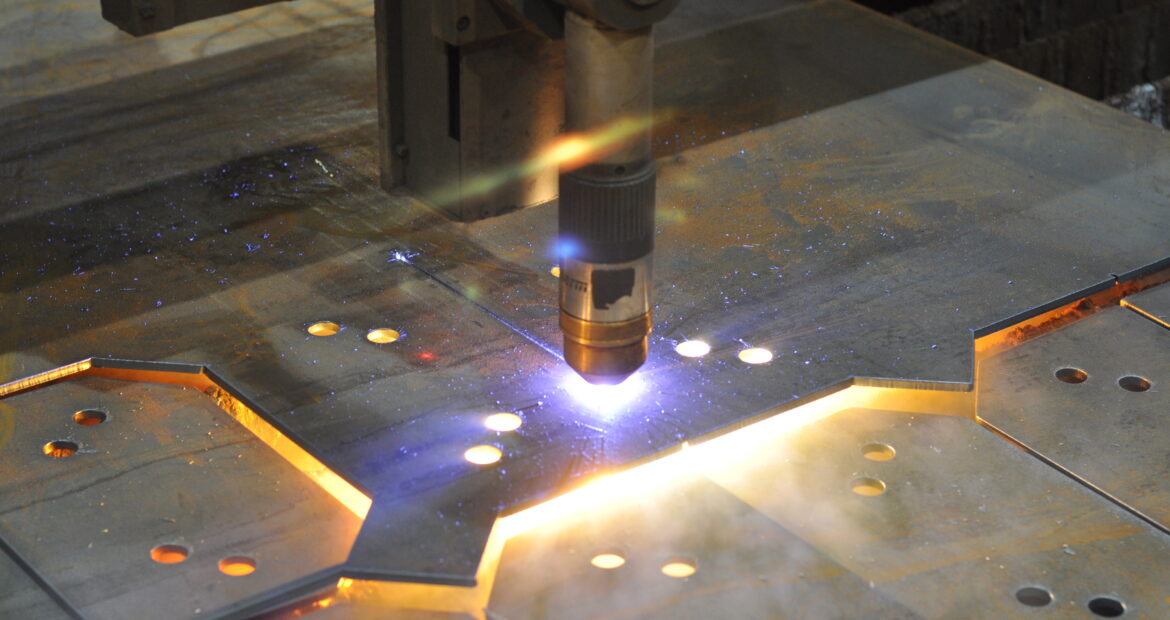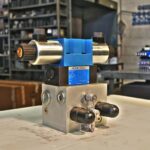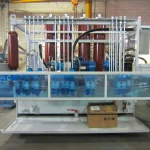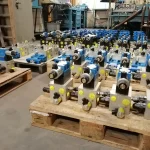The metallurgy sector involves a wide range of manual processes that differ from one another based on the tools and techniques used, as well as on the aim to achieve.
Plasma cutting is definitely part of this branch of work, but what does it involve?
Basically, it is a process that is used to cut metals of different types, such as steel, using a specific tool known as a plasma torch.
This particular method for cutting metals is suitable for all electrically conductive materials and makes it possible to cut both fine sheet and greater thickness metals. But how does it actually work? What can we say about the methods for using this tool?
We answer all of the above questions in this short, but interesting article that provides a detailed panorama of the subject.
How plasma cutting works
As mentioned, a plasma torch is all that is needed to cut a wide range of metal types, even when the thickness is quite significant.
The basic operation of the torch involves high-speed gas ejection using a special nozzle; this creates an electrical arc between the electrode contained in the torch and the metal to be cut, which then transforms the ejected gas into plasma.
However, it is good to clarify the definition of plasma, which is no more than a gas formed of electrons and ions, but with a neutral electric charge.
This special physical state means that the metal to be cut can be taken to its melting point; after this, the kinetic energy released by the gas is able to expel the molten metal, allowing the cutting process to go ahead.
The whole plasma cutting procedure is divided into two major steps:
- the ignition stage, the process during which plasma is created, which originates from a spark induced by the high-voltage current between the electrode and nozzle. This particular stage could be triggered also by placing the electrode and nozzle in close contact, with the electrical current that passes between the two short-circuited parts and the gas which causes them to separate. However, the process needs an ignition spark to work;
- the transfer stage, which involves contact between the plasma and the anode that serves to conduct electricity at low voltage.
Plasma cutting conceals a rather complex operation, but it is definitely efficient when it comes to cutting metals quickly, correctly and above all, in very large quantities.
Let’s look at some of the way that this special type of cutting can be used.
Uses for plasma cutting
Given that it can be used on sheet metal in various thicknesses, plasma cutting is considered an extremely versatile method for processing metals.
The tools used for plasma cutting, manual plasma torches are able to cut sheet metal up to 50 mm thick; automatic torches can cut metal sheets up to 130 mm thick.
This technique means it is possible to direct plasma cutting machinery, bringing with it an extremely high degree of precision and ensuring the execution of different types of cut, even on curved metals or metal sheets with corners.
Given the effectiveness and rapidity with which they process metals, plasma cutting machines are quite expensive tools, which is why plasma torches are exclusively made for professional use.
While we are on the subject, we should say that scientific and technological progress in recent years has made giant leaps forward, making it possible to create increasingly less bulky machinery that needs very little space. This in turn has brought down the prices of plasma torches, making them more accessible to DIY enthusiasts.
Nonetheless, we should stress that plasma cutting could take some metals to their boiling point; this includes the possibility of creating very harmful toxic fumes which, if inhaled, can lead to respiratory diseases.
Therefore, the machines that use plasma cutting should be used in specific areas that are well ventilated and equipped with a specific fume exhaust system, to keep fumes from being breathed in by workers.
As well as this, plasma cutting is also able to generate ultraviolet radiation, which is dangerous to the eyes. Therefore, when working in close contact with machinery using this technique, it is essential to use PPE, such as masks, goggles and work clothing that meets with all safety standards, plus all means to protect worker safety.
Lastly, the acoustic waves generated by the plasma arc are significant sources of electromagnetic radiation and therefore, anyone wearing a subcutaneous pacemaker should keep away from these machines, since their operation could interfere with the integrity of the medical device.
Given that plasma cutting is a technique that should be used by people with a certain level of good sense and preferably, specific skills, it is always advisable for it to be limited to professional environments, so as to prevent easily avoidable work accidents.
In conclusion, plasma cutting is a consolidated technique and it is widely used in the metallurgy sector. Using a plasma torch but without underestimating the inherent risks and always with the required protective devices makes precision cutting possible, while safeguarding human life.











